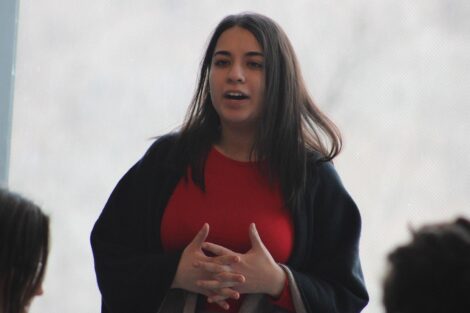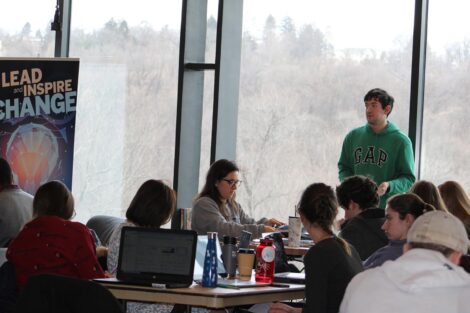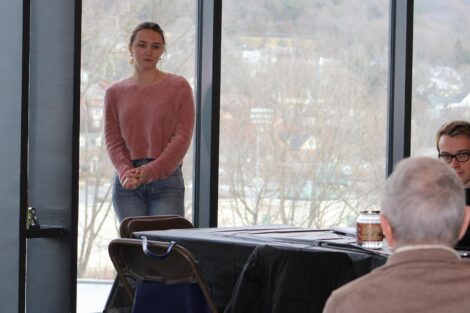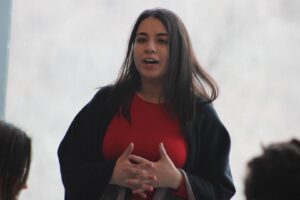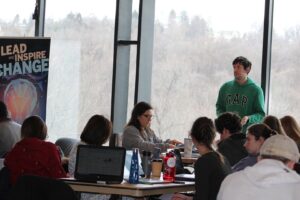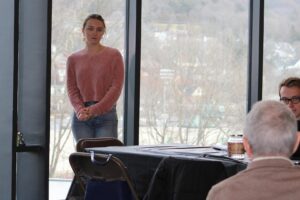Prof. Veshosky partners with Dyer Center to help students develop innovative ideas for industry
By Stephen Wilson
Construction projects require talented managers when it comes to cost estimates, budgeting, scheduling, documenting, and reporting. Add labor relations, quality management, and regulatory issues to these, and people might see why it takes so long to complete a project.
What could make it better?
How about a manpower tracking app for general contractors that allows workers to scan in and out of a job? Maybe an efficient and effective pre-construction meeting app among architect, project owner, and construction manager? How about an app that replaces paper “stop cards” to better track and record safety violations? Maybe a rating platform for third-party contractors—think of it as an Angie’s List for construction?
If these solutions sound too good to be true, they were just the start for students in Construction Management, a 400-level civil engineering course taught by David Veshosky, associate professor of civil engineering and co-chair of the architectural studies program.
Veshosky worked with Yusuf Dahl, director of the Dyer Center for Innovation and Entrepreneurship, to develop an innovation component to his course in hope that it would inspire students to see themselves as more than executors of construction tasks.
“Of course, they have to manage projects well in the industry,” says Veshosky. “But they also need to bring solutions that help advance the industry forward.”
Veshosky is no stranger to innovation. He traveled to Stockholm, Sweden, as the Dyer representative for the Global Consortium of Entrepreneurship Centers. While there, he noticed that Lafayette was one of only a few liberal arts institutions.
“Everyone in attendance was talking about entrepreneurship in terms of critical thinking, problem-solving, and effective communication, the basic elements of a liberal arts education,” he says. “That experience inspired me to find ways to incorporate innovation into my courses, both as an educational component but also as a way to appeal to students who are very entrepreneurial,” he says.
Early in the course, students met with Dahl for an overview that covered discovering pain points, ideating solutions, and making journey maps.
“Many of the student teams following that introduction met with me and allowed the Dyer Center to further their thinking and expand their innovative ideas,” says Dahl.
Students pitched ideas in class and weeks later offered refined ideas.
They were slated to present ideas at the end of the semester to industry leaders until the COVID-19 pandemic forced Veshosky to shift his class plans.
“While I am disappointed that I had to direct the students’ focus in different directions, I am glad to see that they rose to the challenge by speaking with leaders in the industry, identified real pain points, and developed viable solutions,” says Veshosky.
